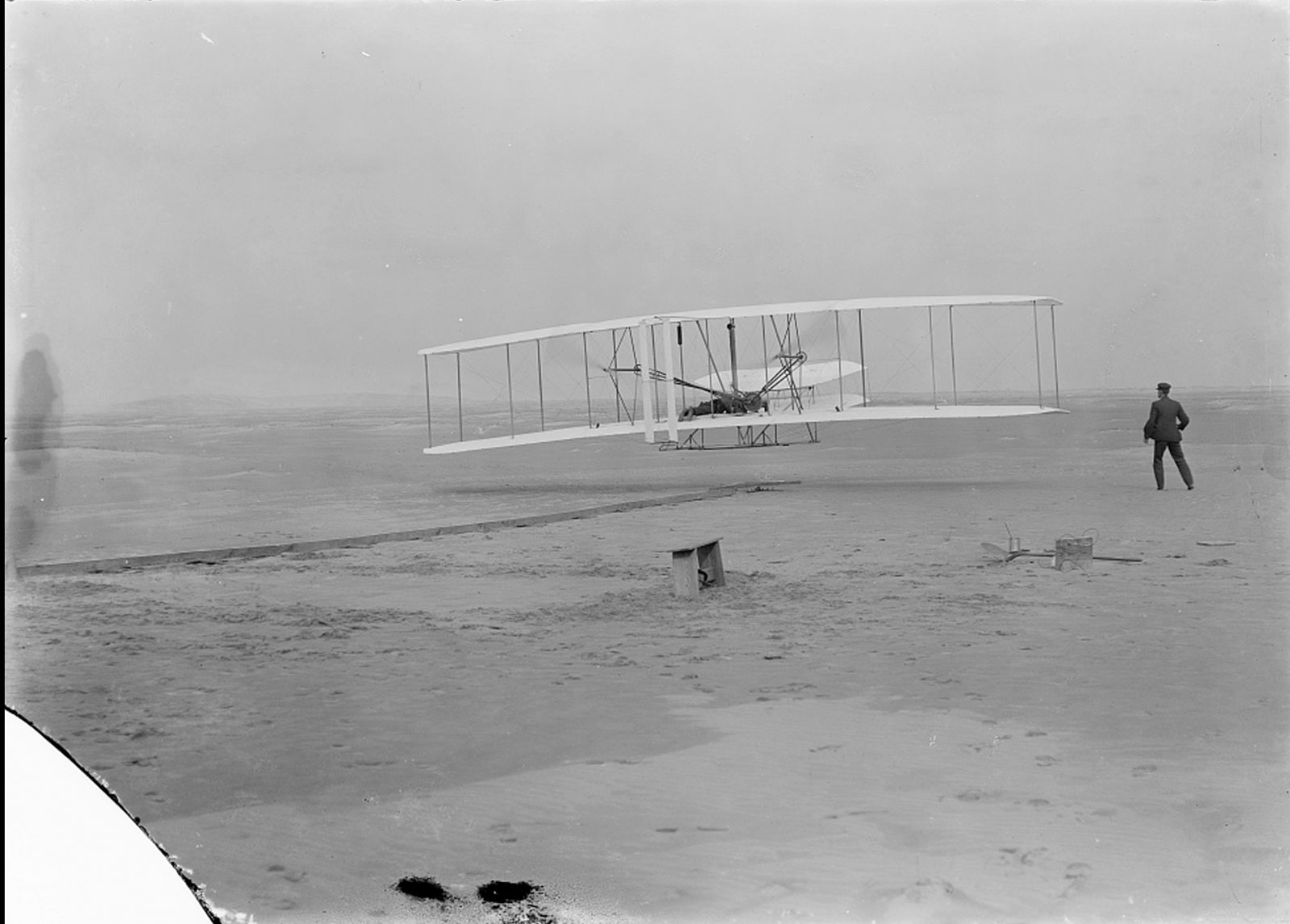
A tiny piece of the Wright brothers' history-making plane will take to the skies on Mars a few weeks from now, if all goes according to plan.
NASA's Mars Helicopter Ingenuity, which could lift off on the Red Planet as soon as April 8, bears a tiny swatch of fabric from one wing of Flyer 1, the plane that in December 1903 made the first powered flights on Earth, agency officials announced Tuesday (March 23).
The Wright brothers ushered in "aerial mobility as a dimension for us to be able to travel here on Earth," Bob Balaram, Ingenuity chief engineer at NASA's Jet Propulsion Laboratory (JPL) in Southern California, said during a news conference Tuesday. "In the same way, we are hoping that Ingenuity also allows us to expand and open up aerial mobility on Mars."
The Flyer 1 swatch, which is about the size of a postage stamp, is attached to a small cable beneath Ingenuity's solar panel, Balaram added.
Related: NASA's Mars helicopter Ingenuity explained
Ingenuity traveled to Mars with NASA's car-sized Perseverance rover, which touched down inside the 28-mile-wide (45 kilometers) Jezero Crater on Feb. 18. Perseverance's main jobs are to hunt for signs of ancient life inside Jezero, which hosted a big lake and a river delta billions of years ago, and to collect and cache dozens of samples for future return to Earth. But the rover's first big task is to help get the technology-demonstrating Ingenuity off the ground, and (if possible) to document the 4-lb. (1.8 kilograms) chopper's flights for posterity.
The Ingenuity team aims to make five short flights during a monthlong window, which will open when Perseverance deploys the helicopter from its belly onto the red dirt. That deployment will be a long and involved process that takes about six Earth days to complete, mission team members said during Tuesday's press conference.
Get the Space.com Newsletter
Breaking space news, the latest updates on rocket launches, skywatching events and more!
If Ingenuity's flights are successful, aerial exploration could be a common feature of Mars missions in the coming years. Helicopters could scout terrain for rovers and gather data on their own, especially in hard-to-reach places, NASA officials have said. (Ingenuity doesn't carry any scientific instruments, though it does sport two cameras.)
Other alien skies will soon host flying robots as well. NASA is developing a mission called Dragonfly, which will send a big, instrument-laden drone to Saturn's biggest moon, Titan. Dragonfly is scheduled to launch in 2027 and land on Titan in 2036.
"The future of powered flight in space exploration is solid and strong," Bobby Braun, director for planetary science at JPL, said during Tuesday's news conference.
Ingenuity isn't the first pioneering NASA craft to carry a piece of Flyer 1 beyond Earth.
"A different piece of the [fabric] material, along with a small splinter of wood, from the Flyer 1 was flown to the moon and back aboard Apollo 11," NASA officials wrote in a statement.
Mike Wall is the author of "Out There" (Grand Central Publishing, 2018; illustrated by Karl Tate), a book about the search for alien life. Follow him on Twitter @michaeldwall. Follow us on Twitter @Spacedotcom or Facebook.
Join our Space Forums to keep talking space on the latest missions, night sky and more! And if you have a news tip, correction or comment, let us know at: community@space.com.

Michael Wall is a Senior Space Writer with Space.com and joined the team in 2010. He primarily covers exoplanets, spaceflight and military space, but has been known to dabble in the space art beat. His book about the search for alien life, "Out There," was published on Nov. 13, 2018. Before becoming a science writer, Michael worked as a herpetologist and wildlife biologist. He has a Ph.D. in evolutionary biology from the University of Sydney, Australia, a bachelor's degree from the University of Arizona, and a graduate certificate in science writing from the University of California, Santa Cruz. To find out what his latest project is, you can follow Michael on Twitter.









